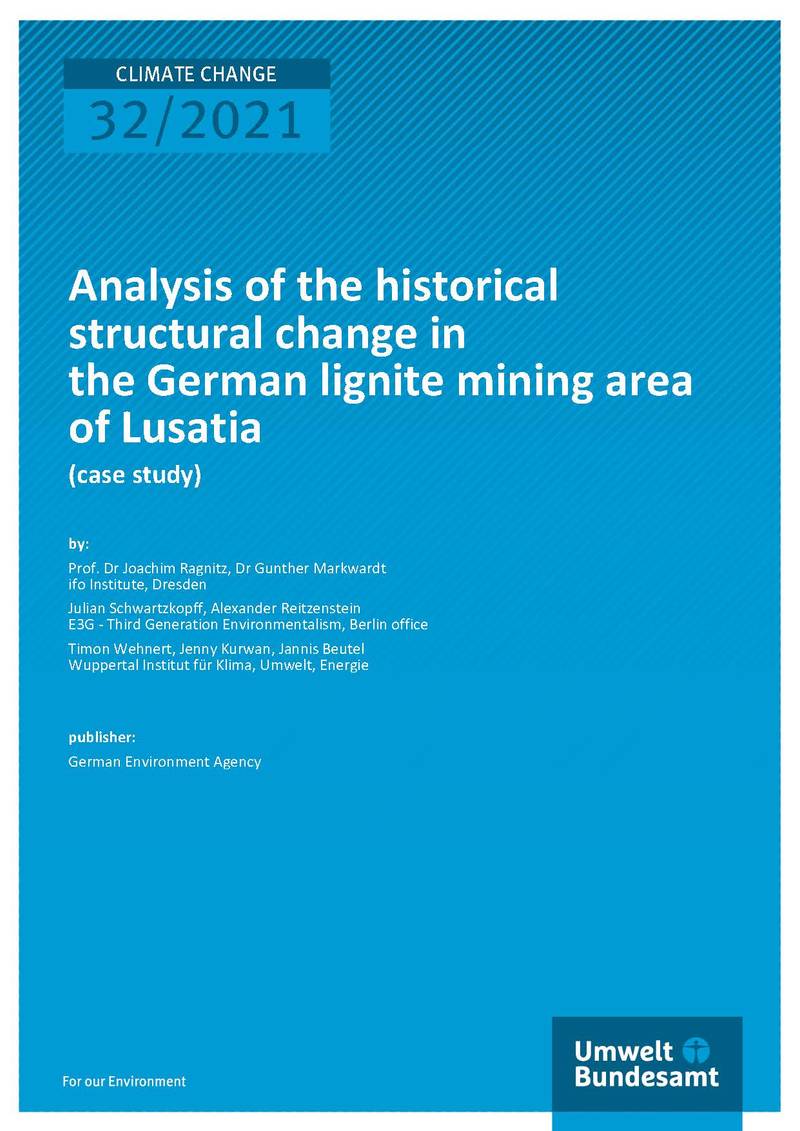Analysis of the historical structural change in the German lignite mining area of Lusatia

This case study examines the structural change in Lusatia caused by the system change from a
centrally planned economy to a market economy over the investigation period 1990-2015.
Large-scale de-industrialisation was a characterising factor, which also greatly affected the
Lusatian lignite economy. The case study describes the historical structural change process and
analyses the structural policies that were implemented as a reaction to this process. Its objective
is to make this knowledge available for future structural change processes in other (coal)
regions. For this purpose, the case study categorises the structural policy interventions as
“preserving”, “reactive” and “forward-looking” and evaluates their (intended) impact by using
the dimensions “economy”, “social welfare”, “ecology” and “regional identity”.
The economic policy of the German federal government and the governments of the states
involved has initiated various structural policy interventions over the course of time. For a long
time, these interventions focussed on the economic region of “East Germany” as a whole and
were not specific to Lusatia. Overall, the structural policy in Lusatia is considered as only
modestly successful. In retrospect, the “Aufbau Ost” [reconstruction east; development of the
East German states] policy (1990-1998) can be described as successful at least from an
economic perspective. However, new structural patterns have developed, above all, in locations
that were sufficiently attractive for external investors. In this respect, the structural policy was
organised as an accompanying (“reactive”) policy rather than as a (structure) forming policy.
Today, Lusatia is still considered as being structurally weak.
The analyses in this case study show that particularly in the early 1990s, the policy was
concerned with cushioning the negative impact of the transformation-related structural change
on the labour market. It was only towards the end of the 1990s that this “reactive” structural
policy was replaced with a structural policy that focused more heavily on supporting the
structural adaptation processes (hence making it forward-looking). This policy was based above
all on stimulating innovation and still continues today.
Using the impact dimensions developed by the project consortium, the structural policy
interventions in Lusatia are primarily to be classified as serving the “economy” impact
dimension and (at least until the end of the 1990s) as serving the “social welfare” impact
dimension. This classification is also reflected in the societal discourse in the East German states
and in Lusatia. The “ecology” impact dimension most likely played a part in the necessary
renaturation measures in the areas affected by the closure of the lignite opencast mines or in the
remediation of former industrial land. The “regional identity” did not play a part as an impact
dimension in the structural policy programmes.